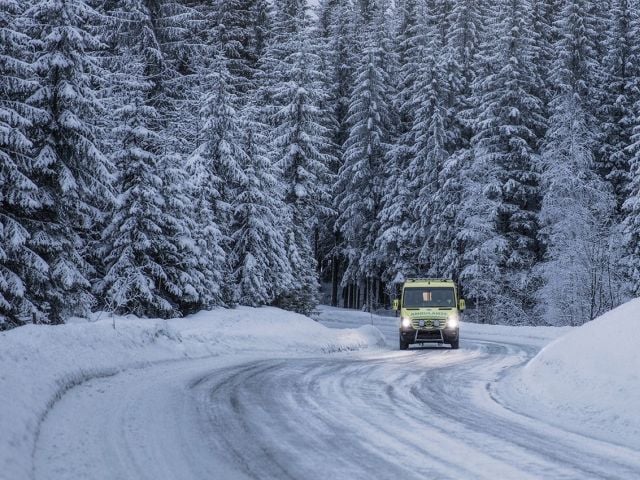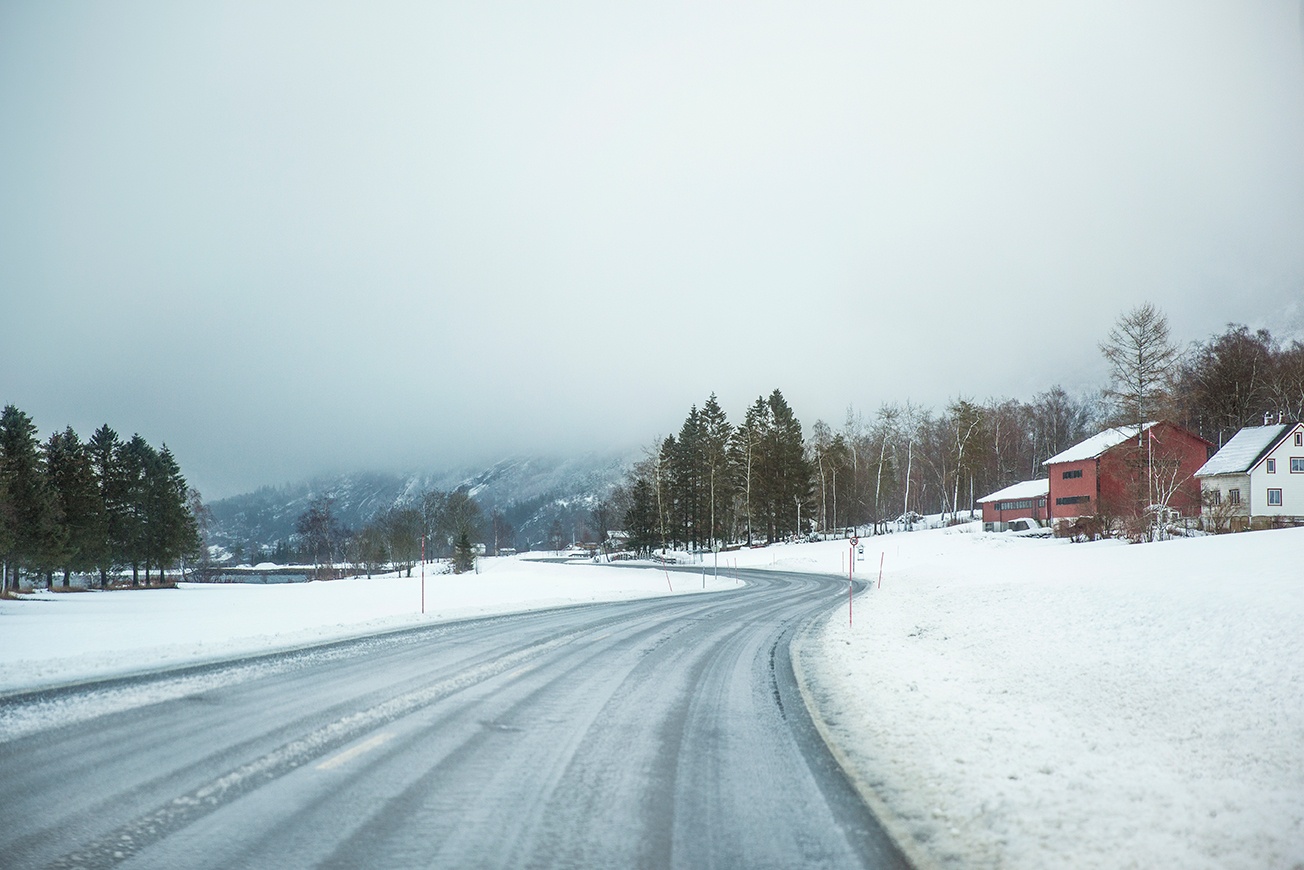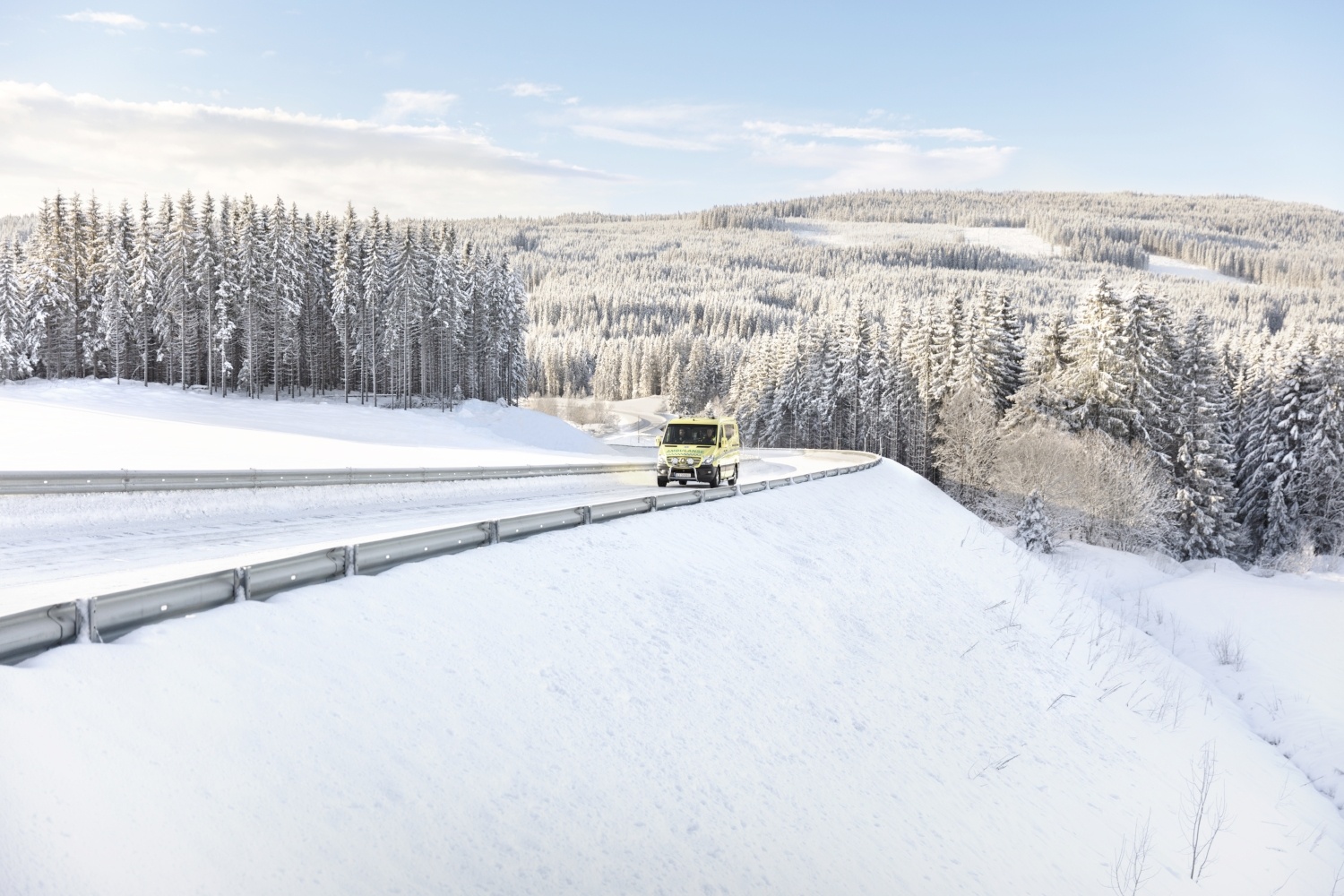We all know that friction and traction is crucial to avoid sliding vehicles and spinning wheels. (To learn more, read the blog post What is traction, friction and road grip?) When driving, we have a sense of whether road friction is high or low. But is there a measure for road friction? If so, how could that be calculated since there are several different variables summing up as road friction? Let’s have a closer look at this “road friction”.

About Ulrik Andersson
Why are bridges icy when the road isn’t?
Ulrik Andersson, January 12, 2017
We should pay special attention to bridges and overpasses when driving in temperatures around freezing point. We’ve learnt that bridges may be icy while the road isn’t, and that’s all we need to know to for safety reasons. But, giving it a second thought, how could the bridge be icy when the road isn’t? Here’s why.
What is traction, friction and road grip?
Ulrik Andersson, November 29, 2016
Whether driving a small go-kart or a heavy hauler, you must have traction to move forward. Actually, you can’t even walk without it. Traction is a commonly used word and many believe it’s just another word for friction. But is it really? Let’s have a closer look at friction and traction – what it is and why it’s so fundamental to safe driving.
We all know the feeling when tyres lose grip and the vehicle starts skidding. Controlled skidding in a go-kart could be fun, but a heavy vehicle unexpectedly skidding on a road could cause a very dangerous situation. The skidding is due to the vehicle losing road grip and obviously, this has to do with tyres and road surface.
What to do when waking up to slippery road conditions?
Ulrik Andersson, November 10, 2016
Early November, just a few degrees below the freezing point. Strong wind and the first snow has been fallen since the night and it has started piling up. It´s time to go to work and start your scheduled route throughout the city.
These first days with ice, snow and slippery conditions are always interesting. Everyone seems surprised about the rough conditions and you have to be prepared and drive more intelligent. Watch out for the extra slippery junctions and roundabouts where the thin layer of ice is polished by other vehicles to an even more slippery surface. Be sure to have enough space in front of you to be able to stop before hitting someone or something.
How to keep your Onspots working properly
Ulrik Andersson, November 2, 2016
As soon as your day starts, habits are put in place and follow each other. From the alarm clock that rings in the morning, the daily work missions, to the evening trip back home.
Are others habits / routines present in your work day? Let's look more closely at the advantage and the inconvenience of these habits.
Would I benefit from automatic snow chains?
Ulrik Andersson, October 20, 2016
Drivers ruling under the laws of nature
We live in the era of automation. Have you ever thought of all these things that used to need a lot of human involvement, but today are seemingly automatic? Buying things for example. We have access to a global supply of products and services that are just a few clicks away, and we get our deliveries with very little human involvement. It’s different systems that communicate and automate that provide this convenience.
Also today’s vehicles are stuffed with systems to make usage safer and more convenient. Actually, automation technology develops at such a pace that self-driving vehicles are no longer a futuristic dream. They are here soon…
How to - tips for efficient driving when the winter weather strikes
Ulrik Andersson, September 27, 2016
It comes every year, but it surprises us every time and often poses severe problems – of course we are talking about the winter. Everyone involved in the transportation industry knows that a lack of road maintenance and poorly equipped trucks can cause major problems and increased costs. We cannot influence the weather but we can adapt our business to the weather and to the slippery conditions.
Download the tips for efficient driving in winter weather conditions below!
How to shorten your response time in rescue driving
Ulrik Andersson, September 7, 2016
Why response time must be reduced
For rescue operations ‘response time’ is one of the measures for effectiveness. In emergency situations response time should be as short as possible as this could be crucial for saving lives or properties at danger. Accordingly, much effort is put into reducing response times. But actually, what is response time?
Response time is a sum of parts
The total response time could be split into three clearly different phases:
- Dispatch time – This is the time elapsed from when an emergency call is received at the central until the rescue unit is notified.
- Turnout time – The time from when the rescue unit is notified until it is responding.
- Travel time – The time from responding until arriving at the incident scene.
It’s quite obvious that the potential for reducing response time will differ considerably depending on what phase we’re looking at.

.jpg)
.jpg)

.jpg)



